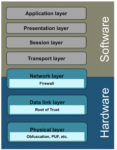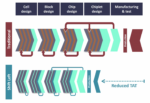In today’s digital age, software has become the backbone of modern enterprises, powering critical operations, driving innovation, and facilitating collaboration. However, with the proliferation of software applications and the complexity of licensing models, organizations are facing significant challenges … Read More
Author: Kalar Rajendiran
Navigating the Complexities of Software Asset Management in Modern Enterprises
Scaling Data Center Infrastructure for the Terabit Era
Earlier this month, SemiWiki wrote about Synopsys’s complete 1.6T Ethernet IP solution to drive AI and Hyperscale Data Center chips. A technology’s success is all about when, where and how it gets adopted within the ecosystem. In the high-speed ethernet ecosystem, the swift adoption of 1.6T Ethernet relies on key roles and coordinated… Read More
Synopsys SNUG Silicon Valley Conference 2024: Powering Innovation in the Era of Pervasive Intelligence
After the leadership transition at the top, Synopsys had just a little more than two months before the company’s flagship event, the Synopsys User Group (SNUG) conference. The Synopsys user community and entire ecosystem were waiting to hear new CEO Sassine Ghazi’s keynote to learn where the company is going and its strategic … Read More
Complete 1.6T Ethernet IP Solution to Drive AI and Hyperscale Data Center Chips
The demand for high-bandwidth, low-latency networking solutions has never been greater. As artificial intelligence (AI) workloads continue to grow exponentially, and hyperscale data centers become the backbone of our digital infrastructure, the need for faster and more efficient communication technologies becomes imperative.… Read More
Accelerate AI Performance with 9G+ HBM3 System Solutions
In the technology realm of artificial intelligence (AI) and high-performance computing (HPC), the demand for higher throughput and efficiency has never been greater. To meet these evolving demands, innovative memory solutions have emerged as critical enablers, paving the way for transformative advancements in computing… Read More
Designing for Security for Fully Autonomous Vehicles
With the advent of IoT devices, vehicles have become increasingly interconnected, offering enhanced automation, connectivity, electrification, and shared mobility. However, this progress also brings forth unprecedented challenges, particularly in ensuring the safety and security of automotive electronics. The complexity… Read More
A Game-Changer for IP Designers: Design Stage Verification
In today’s rapidly evolving semiconductor industry, the design and integration of intellectual property (IP) play a pivotal role in achieving competitive advantage and market success. Whether sourced from commercial IP providers or developed in-house, ensuring that IP designs are compliant with signoff requirements… Read More
Navigating the 1.6Tbps Era: Electro-Optical Interconnects and 224G Links
In the relentless pursuit of ever-increasing data speeds, the 1.6 Terabits per second (Tbps) era looms on the horizon, promising unprecedented levels of connectivity and bandwidth within data centers. As data-intensive applications proliferate and the demand for real-time processing escalates, the need for robust and efficient… Read More
Sustainable Development: Connected Devices and the Role of Flexible Semiconductors
The ambitious United Nations Sustainable Development Goals (SDGs), from reducing food waste to enhancing global healthcare access, hinge on a connected world where every object whispers valuable data. As technology strives to address environmental challenges, healthcare needs, and promote responsible consumption, traditional… Read More
Cryogenic Semiconductor Designs for Quantum Computing
Over the last few years, there has been an increase in news about quantum computing. Much of this news coverage has been around computing supremacy, potential threats to information security and quantum cryptography. While the field of quantum computing is still in its early stages, there are several companies who have already… Read More



















Quantum Computing Technologies and Challenges